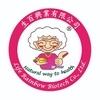
Content sponsored by:
Life Rainbow
Annual survey of mycotoxin in feed in the first half of 2020-Taiwan
Published: September 30, 2020
Source : Life Rainbow
In the first half of 2020, Life Rainbow Biotech randomly collected 208 feed samples of raw materials and feed mills in farms and analyzed. The samples were tested for aflatoxins (B1, B2, G1, and G2), zearalenone, fumonisins (B1, B2, and B3) and deoxynivalenol by the ELISA Mycotoxin analysis kit (Romer Labs®).
Results:
208 feed samples collected, and 72.6% were contaminated with Fumonisins and 84.6% contaminated with deoxynivalenol (table 1). All the maximum concentrations of mycotoxin were over the limit of quantification in this survey except the Alfatoxins.

Data on corn meal, nursery, and pregnant diet were conducted to give the prevalence of mycotoxins. Out of total 208 samples, 48 samples from corn meal were analyzed that observed feed were contaminated 60.4% of Fumonisins and 81.3% of deoxynivalenol (table 2).

Of 45 samples of nursery feed collected, and analyzed that feed sample were contaminated with 66.7% Fumonisins and 88.9% deoxynivalenol (table 3).

The occurrence of mycotoxin in pregnant diet also analyzed and founded that deoxynivalenol and fumonisins were most prevalent mycotoxins in pregnant diet, detected in 80.3% and 83.3% of samples respectively. (table 4).

Conclusion:
The most prevalent mycotoxin exam in the feed samples in the first half of 2020 in Taiwan was fumonisins and deoxynivalenol, 72.6% and 84.6% respectively.
Mycotoxin is a secondary metabolite naturally produced by molds in grains, and the raw materials contaminated by molds will expand the scope of contamination, pollute the end products and feeds. Animals long-term exposure to mycotoxins will lead to reducing their productivity and immunity and causes the farmer to gain lesser profit. Therefore, the risk management of mycotoxin and using mycotoxin treatment agents are necessary for the management of culture. Toxi-Free PLUS® is an enzymatic detoxify product consists of three different type enzymes and each enzyme has the specific activity to convert mycotoxins into nontoxic to reduce the toxicity caused to animals.
Related topics:
Recommend
Comment
Share
27 de diciembre de 2022
Thanks for such wonderful results. DON and fumonisin are very prevalent in the feed samples. Do you think there is a common ingredient in these feeds that is favourable for fungi producing fumonisin and DON?. If that is the case then the source should be investigated or ingredient changed.
Recommend
Reply

Would you like to discuss another topic? Create a new post to engage with experts in the community.




